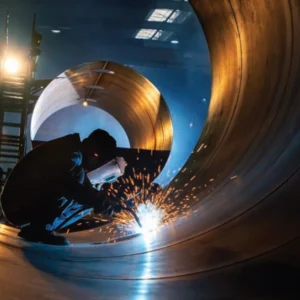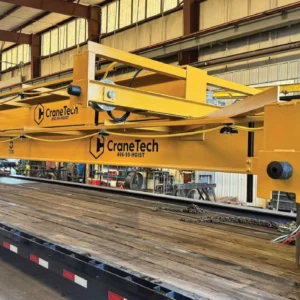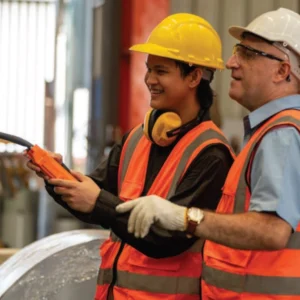Statistics gathered by the US federal Occupational Safety and Health Administration (OSHA) show that the most common type of accident involving overhead cranes is someone being hit by a suspended load.
A Crane Institute of America (CIA) analysis of OSHA statistics agrees. The analysis determined that 46% of the serious injuries and fatalities involving overhead cranes came from someone being struck by the load.
I have been training crane operators, riggers, and signal persons since the 1980s, and my experience has taught me that the vast majority of serious and fatal accidents involving overhead cranes come from operator error, improper rigging, or something else below the hook, and also that the most frequent cause by far is someone being struck by the load.
In a recent study, Konecranes analyzed a decade’s worth of OSHA data about incidents involving overhead cranes. It found of 249 incidents 133 led to fatalities and 133 injuries.
The study’s results were similar to those found by the CIA’s study, with 37% of the incidents involving someone being crushed by the load, and another 27% being injured by a dropped load.
Right Rigging Required
Dropped loads most often come from poor rigging practices. Those errors include choosing the wrong type of slings, using slings that don’t have enough capacity, choosing the wrong type of hitch for the size and shape of the load, or miscalculating the load’s center of gravity.
Slings can be made of wire rope, alloy-steel chain, metal mesh, synthetic web, synthetic round, or synthetic rope. Each type is well suited to some applications but not others. It’s important to understand which type of sling is best for a specific application. The safe use of slings depends on two important factors.
The first is staying within the sling’s rated capacity, which is affected by the type of hitch in which the sling is configured and the angle at which the sling is used. The second is the sharpness of the edges the sling passes over. Synthetic slings often require a protector between them and any edge of the load that isn’t round and smooth. Even edges that don’t feel sharp can cut through synthetic slings because of the high tension that comes from lifting a heavy load.
The angle at which the sling is used greatly affects its capacity. For example, if a sling sees 1,000 pounds of tension when it is vertical, or at 90 degrees to the top of a load, it will see 1,154 pounds if it is used at a 6-degree angle, 1,414 pounds if it is used at a 45-degree angle, and a whopping 2,000 pounds if it is used at a 30-degree angle. Slings should never be used at angles less than 30 degrees.
For safety’s sake, riggers must be well trained. It’s not as simple as just pulling a couple of straps around a weldment. Correctly rigging loads of the sizes, shapes, and weights that overhead cranes handle takes education and experience.
Stopping Hit-by-Load Accidents
But the type of incident that most often causes serious injury or death is someone being hit by the load. This kind of accident can happen if the operator moves the crane while riggers are still attaching the load, or if the path of the load isn’t cleared of all people during lift, or if the crane operator accidentally puts himself or herself between the moving load and a stationary object.
To avoid accidents with riggers or other people, the operator must not engage any controls until he or she is certain that everyone is in a safe position and the load path is clear.
When lifting the load, the operator should take up all the slack in the hoist lines and rigging slowly and carefully, then lift the load a few inches from the floor to verify the hoist brakes hold the load, that the load is being held securely, and the load and crane are free to move and will clear all obstructions. To prevent the load from swinging during the lift, the operator must make sure that the crane’s hoist is centered over the load’s center of gravity, that the hoist lines are vertical, and that the crane moves slowly and smoothly enough to prevent the load from swinging.
To stay safe while running an overhead crane from the floor, the operator must always be aware of the surroundings and potential hazards.
He or she must keep firm footing and always be aware where they are in relation to the load in order to make sure they never get caught between the load and an obstacle. It is also vital that the operator makes sure he or she knows which way the crane and load will move when the crane’s travel control lever is activated.
When the operator runs an overhead crane from the floor using a pendant-connected or wireless controller, he or she can move around, so it’s easy to switch their orientation to the crane and load. As a result of the operator turning around or moving to a different position, it’s possible for him or her to accidentally move the crane and load in the opposite direction of what they expect. If the crane comes toward the operator when he or she is expecting it to move away from them, they can be crushed between the load and an obstacle.
To avoid that, the operator must always stay aware of which way the controller is oriented to the crane and should start each movement slowly so they can reverse the direction if needed.
As an aid, I’ve seen some sites paint each end and sides of the runway a different color and mark the direction of the travel lever or buttons on the crane’s remote controller with the corresponding paint colors. For example, if one end of the runway is the blue end and the opposite one is the red end, one end of the control lever’s or button’s range of motion is colored blue and the other is red. That way, the operator knows that if he or she pushes the lever or button toward the blue mark on the control box, the crane will travel toward the blue end of the runway, and vice versa for the red mark. Proper training is essential to improving safety, and CIA has provided top-notch training for riggers, signalpersons, and crane operators for more than 25 years.






